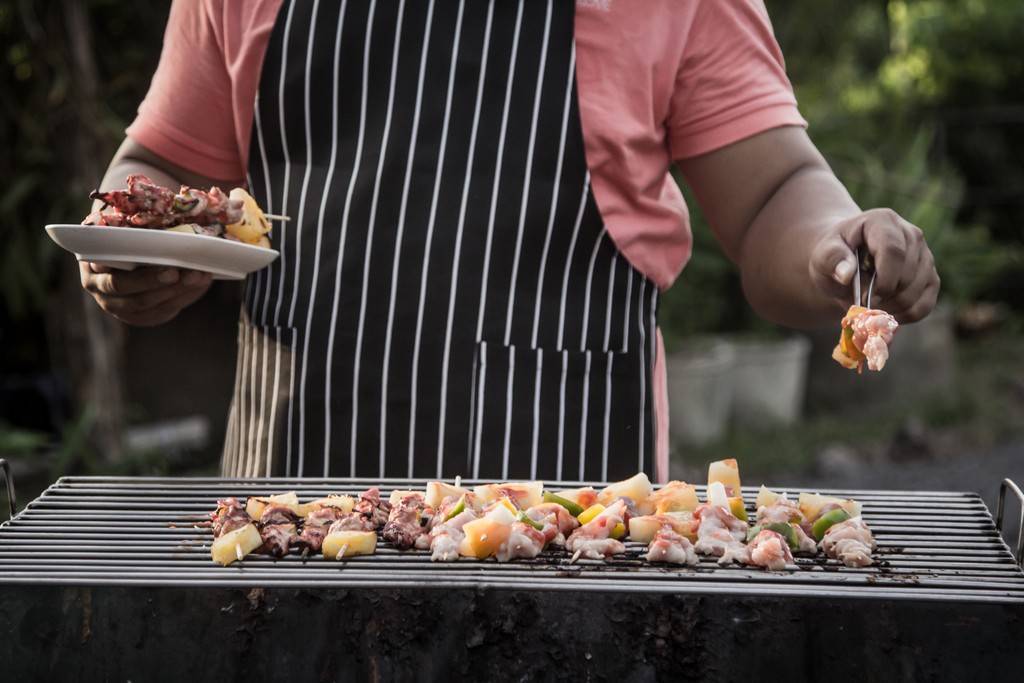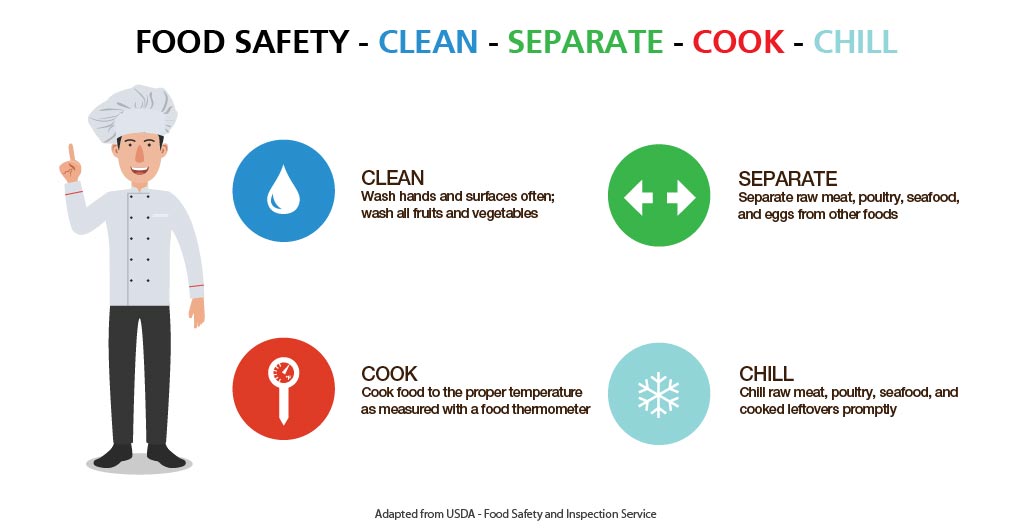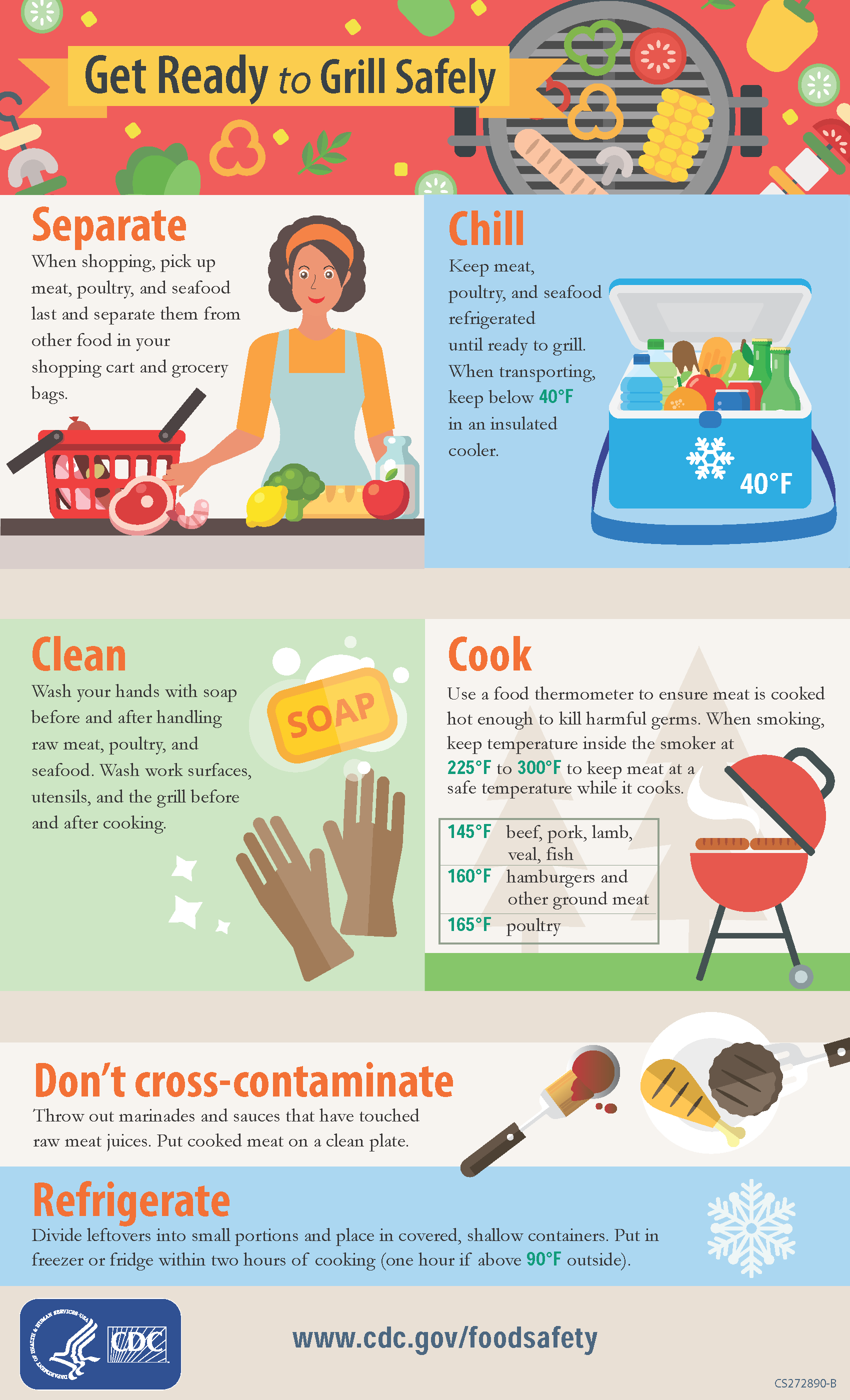National Grilling Month is here! Prevent harmful bacteria from making an appearance at your next cookout by following important food safe guidelines for a safe grilling season.
A grill is one of the best ways to cook summer dinners and have outdoor parties. However, food poisoning peaks in the summer months because not only does bacteria multiply faster in warmer temperatures, but preparing food outdoors makes safe food handling more challenging.
 Image Source: Shutterstock
Image Source: Shutterstock Furthermore, a grill can also be a means to transmit bacteria if care is not taken with how food is properly separated and handled.
- Learn about foodborne pathogens, cross contamination, cold and hot food safety, and best practices to prevent foodborne illness.
- Food Manager ANSI Certification: $99.00 - Valid in all States
- Food Handler Training: Only $7.00!
- 10% OFF: Enter Promo Code "train10off" at Checkout
So whatever the grilling occasion, it’s important to follow food safety guidelines to prevent harmful bacteria from multiplying and causing foodborne illness.
Important Food Safety Steps for Grilling
Follow these steps for a food safe and enjoyable summer grilling season:
 Image Source: Shutterstock
Image Source: Shutterstock Clean
- Wash Hands
Wash your hands with soap before and after handling raw meat, poultry, and seafood. Wash work surfaces, utensils, and the grill before and after cooking. - Check and Clean your grill and tools
Use a moist cloth or paper towel to clean the grill surface before cooking. If you use a wire bristle brush, thoroughly inspect the grill’s surface before cooking. Wire bristles from grill cleaning brushes may dislodge and stick into food on the grill.
Chill
Keep meat, poultry, and seafood refrigerated until ready to grill. When transporting, keep below 40°F in an insulated cooler.
Separate
- Shopping
When shopping, pick up meat, poultry, and seafood last, right before checkout. Separate them from other food in your shopping cart and grocery bags. To guard against cross-contamination, put packages of raw meat and poultry into individual plastic bags. - Marinades
Throw out marinades and sauces that have touched raw meat juices, which can spread germs to cooked foods. - Avoid cross-contamination
To prevent foodborne illness, do not use the same platter, cutting board or utensils for raw and cooked foods. Harmful bacteria present in raw meat and poultry and their juices can contaminate cooked food. Use clean utensils and a clean plate to remove cooked meat from the grill.
Cook
Use a food thermometer to ensure meat is cooked hot enough to kill harmful germs. When smoking, keep temperatures inside the smoker at 225°F to 300°F to keep meat a safe temperature while it cooks.
| Food Type | Internal temperature |
|---|---|
| Beef, Pork, Veal, and Lamb (chops, roasts, steaks) |
145oF with a 3 minute rest time |
| Ground Meat | 160oF |
| Ham, uncooked (fresh or smoked) |
145oF with a 3 minute rest time |
| Ham, fully cooked (to reheat) |
140oF |
| Poultry (ground, parts, whole, and stuffing) |
165oF |
| Eggs | Cook until yolk & white are firm |
| Egg Dishes | 160oF |
| Fin Fish | 145oF or flesh is opaque & separates easily with fork |
| Shrimp, Lobster, and Crabs | Flesh pearly & opaque |
| Clams, Oysters, and Mussels | Shells open during cooking |
| Scallops | Flesh is milky white or opaque and firm |
| Leftovers and Casseroles | 165oF |
Refrigerate
Divide leftovers into small portions and place in covered, shallow containers. Put in freezer or fridge within two hours of cooking (one hour if above 90°F outside).

National Fire Protection Association Grilling Safety Tips
This grilling season, NFPA tests your knowledge and demonstrates the proper way to use your grill safely to prevent fires.
Additional BBQ Food Safety Resources
- FoodSafety.gov – BBQ+A: Answers to Your Most Common Barbeque Questions
- FoodKeeper App
- FoodSafety.gov – Grilling Food Safety 101
- CDC – BBQ IQ — Get Smart. Grill Safely.
- CDC Grilling Food Safety Infographic (PDF)
- Clean: Wash Hands and Surfaces Often
- Recent recalls and alerts
- Safe Minimum Cooking Temperatures
